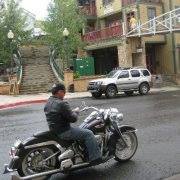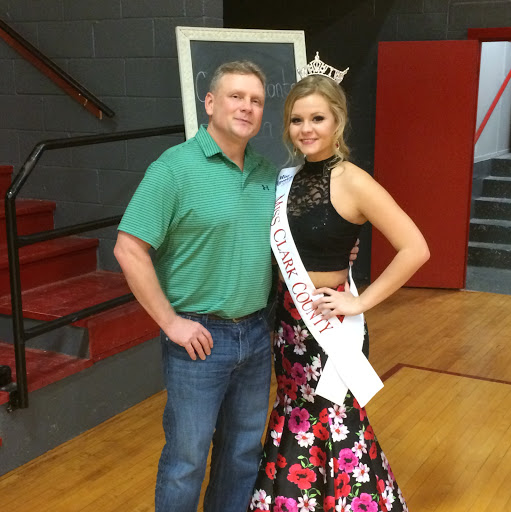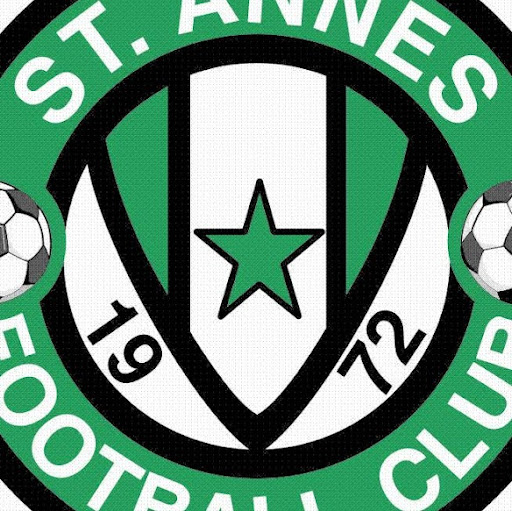Tony R Mckee
age ~67
from Millsboro, DE
- Also known as:
-
- Tony R Dotson
Tony Mckee Phones & Addresses
- Millsboro, DE
- Silver Lake, IN
- Aurora, IL
- 21 Waterwheel Cir, Dover, DE 19901 • 3026977662
- Camden, DE
- 21 Waterwheel Cir, Dover, DE 19901 • 3022295845
Work
-
Position:Professional/Technical
Us Patents
-
Bioprocess Container, Bioprocess Container Mixing Device And Method Of Use Thereof
view source -
US Patent:6837610, Jan 4, 2005
-
Filed:Sep 27, 2002
-
Appl. No.:10/256070
-
Inventors:David Phillip Cadogan - Middletown DE, US
Scott Lester Davidson - Seaford DE, US
Thomas Joseph Edwards - Seaford DE, US
John Kun Hung Lin - Middletown DE, US
Steven Michael Lloyd - Symrna DE, US
Tony Ray McKee - Dover DE, US -
Assignee:ILC Dover LPP - Frederica DE
-
International Classification:B01F 1100
-
US Classification:366144, 366149, 366275
-
Abstract:A bioprocess container consists of a flexible container, placed inside a heat exchanger. By providing a disposable agitation device inside the sealed container, a filled container can be stirred without having to open the container. Possible agitation elements include traditional stirrers, rotating magnetic rods, bladder devices integral with the structure of the container, as well as different devices for manipulating the shape of the sealed container. Finally, a containment disk is used to ensure that the magnetic rod is maintained in the magnetic field.
-
System For The Contained Transfer Of Particulates
view source -
US Patent:RE40840, Jul 7, 2009
-
Filed:Nov 17, 2005
-
Appl. No.:11/280932
-
Inventors:Steven M. Lloyd - Smyrna DE, US
Craig R. Scheir - Dover DE, US
Lewis R. Dickerson - Magnolia DE, US
Donald R. Cohee - Felton DE, US
David S. Burnham - Dover DE, US
Tony R. McKee - Dover DE, US
Charles R. Sandy - Camden DE, US -
Assignee:ILC Dover LP - Frederica DE
-
International Classification:C08G 63/685
-
US Classification:524221, 524243, 524448
-
Abstract:An economical and reliable system for the contained transfer of particulates by means of a series of transfer containers facilitates the particulate transfer without either exposure of the operating personnel and the environment to the particulate, or environmental contamination of the particulate itself. The system employs a multiple o-ring canister assembly which can be attached to either the discharging port or charging port of a piece of processing equipment. The canister has a series of circumferential o-ring grooves which allows the attachment of a series of individual transfer containers. In a charging mode, once the particulate is charged to the processing equipment, a first transfer container is collapsed and a second transfer container is placed in the next o-ring groove, thereby containing the remaining contaminated section of the first transfer container. The first transfer container is removed through a bag-out sleeve which is an integral part of the second transfer container. The process is repeated in a stepwise fashion by moving to the next groove in the canister until the process equipment is completely charged in a particulate contained manner.
-
System For The Contained Transfer Of Particulates
view source -
US Patent:6653377, Nov 25, 2003
-
Filed:Feb 9, 2000
-
Appl. No.:09/500460
-
Inventors:Steven M. Lloyd - Smyrna DE
Craig R. Scheir - Dover DE
Lewis R. Dickerson - Magnolia DE
Donald R. Cohee - Felton DE
David S. Burnham - Dover DE
Tony R. McKee - Dover DE
Charles R. Sandy - Camden DE
John K. Folke - Harrington DE -
Assignee:ILC Dover, Inc. - Frederica DE
-
International Classification:C08K 520
-
US Classification:524221, 524243, 524448
-
Abstract:An economical and reliable system for the contained transfer of particulates by means of a series of transfer containers facilitates the particulate transfer without either exposure of the operating personnel and the environment to the particulate, or environmental contamination of the particulate itself. The system employs a multiple o-ring canister assembly which can be attached to either the discharging port or charging port of a piece of processing equipment. The canister has a series of circumferential o-ring grooves which allows the attachment of a series of individual transfer containers. In a charging mode, once the particulate is charged to the processing equipment, a first transfer container is collapsed and a second transfer container is placed in the next o-ring groove, thereby containing the remaining contaminated section of the first transfer container. The first transfer container is removed through a bag-out sleeve which is an integral part of the second transfer container. The process is repeated in a stepwise fashion by moving to the next groove in the canister until the process equipment is completely charged in a particulate contained manner.
-
Flexible Container Liner Wringing Device And Liner
view source -
US Patent:20190352088, Nov 21, 2019
-
Filed:Aug 1, 2019
-
Appl. No.:16/528721
-
Inventors:- Frederica DE, US
Tony R. McKee - Millsboro DE, US
Adam Michael Sadkowski - Lincoln DE, US -
International Classification:B65D 88/16
B65B 69/00
B65D 88/54
B65D 90/04
B65D 83/00 -
Abstract:A liner L has a liner body () with a front wall (), rear wall (), bottom wall (), a top wall (). The top wall also includes a tubular excess liner material or chute () located close to the rear wall and which includes a filling fitment () with a fitment cap (). The liner also has a cylindrical, hose content inlet/outlet port or bottom fitment (). The liner may include a gap-filler or filler strip () of foam material extending outwardly from a position closely adjacent the outlet fitment. The filler strip is mounted to the front wall directly over and closely adjacent the outlet fitment. The filler strip may taper so that at least a majority of the strip's longitudinal length or height so as to increase in its lateral width as it approaches the outlet fitment, thereby increasing the material volume of strip material.
-
Flexible Container Liner Wringing Device And Liner
view source -
US Patent:20170225882, Aug 10, 2017
-
Filed:Aug 23, 2016
-
Appl. No.:15/244623
-
Inventors:- Frederica DE, US
Tony R. McKee - Millsboro DE, US
Adam Michael Sadkowski - Lincoln DE, US -
International Classification:B65D 88/16
B65D 90/04
B65D 88/54 -
Abstract:A liner L has a liner body with a front wall , rear wall , bottom wall , a top wall . The top wall also includes a tubular excess liner material or chute located close to the rear wall and which includes a filling fitment with a fitment cap . The liner also has a cylindrical, hose content inlet/outlet port or bottom fitment . The liner may include a gap-filler or filler strip of foam material extending outwardly from a position closely adjacent the outlet fitment. The filler strip is mounted to the front wall directly over and closely adjacent the outlet fitment. The filler strip may taper so that at least a majority of the strip's longitudinal length or height so as to increase in its lateral width as it approaches the outlet fitment, thereby increasing the material volume of strip material.
-
Flexible Container Liner Wringing Device And Liner
view source -
US Patent:20170225885, Aug 10, 2017
-
Filed:Aug 23, 2016
-
Appl. No.:15/244609
-
Inventors:- Frederica DE, US
Tony R. McKee - Millsboro DE, US
Adam Michael Sadkowski - Lincoln DE, US -
International Classification:B65D 90/04
B65D 88/54
B65D 83/00 -
Abstract:A liner (L) has a liner body () with a front wall (), rear wall (), bottom wall (), a top wall (). The top wall also includes a tubular excess liner material or chute () located close to the rear wall and which includes a filling fitment () with a fitment cap (). The liner also has a inlet/outlet port or bottom fitment (). The liner may include a gap-filler or filler strip () of foam material extending outwardly from a position closely adjacent the outlet fitment. The chute or filling fitment is positioned on the top wall closely adjacent the rear wall and diagonally opposite the bottom fitment to provide a generally equal run of material in either direction between the top fitment and the bottom fitment.
-
Flexible Container Liner Wringing Device
view source -
US Patent:20170096293, Apr 6, 2017
-
Filed:Oct 5, 2015
-
Appl. No.:14/874776
-
Inventors:- Frederica DE, US
Tony R. McKee - Millsboro DE, US -
International Classification:B65D 88/54
B65D 90/04
B30B 9/20 -
Abstract:A liner wringing device () is disclosed for use with a container liner. The wringing device includes a housing () with an internal cavity which houses the mechanical components of the wringing device. The housing defines a central liner compression channel (). The internal components include a bottom support plate () with a central opening aligned along the central channel. The wringing device also includes a drive assembly () formed by four elastomeric rollers () positioned so that the peripheral contact surfaces () are aligned generally tangentially with the central channel. The four rollers are each mounted to a drive shaft/axle which includes bevel gears which are meshed so that all four rollers rotate in simultaneous, synchronic rotation through the actuation of a pneumatic air gear motor ().
-
Liner Sump Dispensing System
view source -
US Patent:20150284181, Oct 8, 2015
-
Filed:Apr 8, 2014
-
Appl. No.:14/247464
-
Inventors:- Alpharetta GA, US
Tony R. McKee - Dover DE, US -
Assignee:Grayling Industries, Inc. - Alpharetta GA
-
International Classification:B65D 88/60
B65D 88/56 -
Abstract:A liner sump dispensing system () is disclosed which is used in conjunction with a liner () and an intermediate bulk container (). The liner sump dispensing system includes a liner cassette () and a tilting device (). The liner cassette is mounted to the bottom of the liner. The tilting device includes a tray () and a reciprocating pneumatic arm () having a pneumatic cylinder () and a piston rod () pivotally coupled to a rear end () of the tray. The tray has a trapezoidal shaped floor () and a pair of inclined wings () extending upwardly along an incline from the floor. A L-shaped mounting flange () adapted to be coupled to the top end of the container is coupled to the end of the pneumatic cylinder opposite from the tray. The actuation of the pneumatic cylinder tilts the tray to tilt the liner bottom end.
License Records
Tony Patrick Mckee
License #:
C005160 - Active
Category:
Social Work
Issued Date:
Dec 9, 2005
Expiration Date:
Jun 30, 2017
Type:
Clinical Social Worker
Resumes

Tony Mckee
view sourceLocation:
United States

Tony Mckee
view source
Tony Mckee
view sourceFlickr
Youtube
Classmates

Tony McKee
view sourceSchools:
New Braunfels High School New Braunfels TX 1978-1982
Community:
Johnny Suarez, Wayne Blanchard

Tony McKee
view sourceSchools:
Phillips High School Phillips TX 1956-1968
Community:
Dessie Bryan, Floyd Veatch, Marilyn Haugh, Barbara Cook

Tony McKee
view sourceSchools:
Memorial Composite High School Stony Plain Azores 1985-1989
Community:
Randy Underwood, Kathryn Ibsen, Kristina Roberts, Chris Wyatt

Tony McKee (Bumgardner)
view sourceSchools:
Marion-Franklin High School Columbus OH 1972-1976
Community:
Todd Alles, Carol Daniel, Carole Fox, Thomas Nippert

Tony McKee
view sourceSchools:
Holy Cross School Dover DE 1985-1989
Community:
Ginamaria Lewandowski

Paxton High School, Paxto...
view sourceGraduates:
Tony McKee (1977-1981),
Misty Rawls (2003-2007),
Carolyn Gillman (1957-1961),
Leron Geoghagan (1987-1991),
Jamie Morrison (1997-2001)
Misty Rawls (2003-2007),
Carolyn Gillman (1957-1961),
Leron Geoghagan (1987-1991),
Jamie Morrison (1997-2001)

Holy Cross School, Dover,...
view sourceGraduates:
Tony McKee (1985-1989),
Ken Whitecloud (1974-1978),
Renee Mosley (2001-2005),
Ashley McMullen (1998-2002)
Ken Whitecloud (1974-1978),
Renee Mosley (2001-2005),
Ashley McMullen (1998-2002)

Tony Mckee
view source
Tony McKee
view source
Tony McKee
view source
Tony Mckee
view source
Tony McKee
view source
Tony Mckee
view source
Tony Mckee
view source
Tony Mckee
view sourceGoogleplus

Tony Mckee
Lived:
Palatine, Illinois
Work:
US Security - Security Guard
Education:
Harper College

Tony Mckee

Tony Mckee

Tony Mckee

Tony Mckee

Tony Mckee

Tony Mckee

Tony Mckee
Myspace

Tony McKee
view sourceGet Report for Tony R Mckee from Millsboro, DE, age ~67













